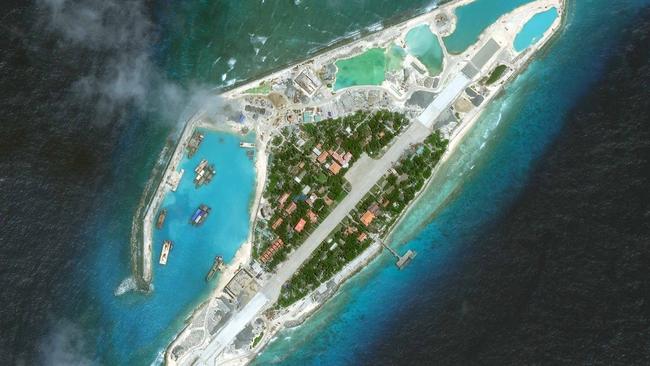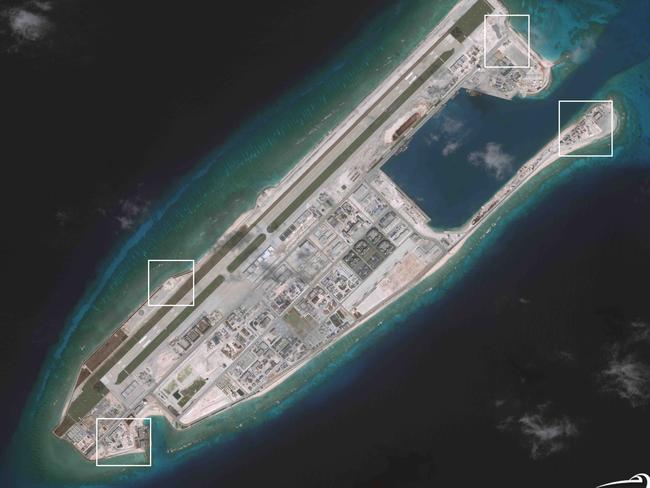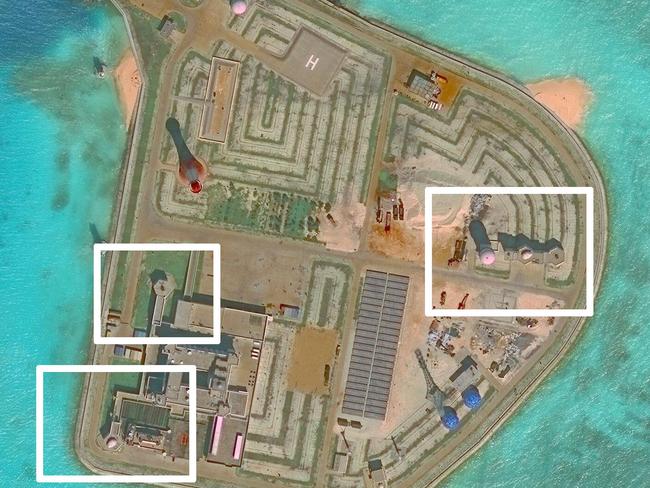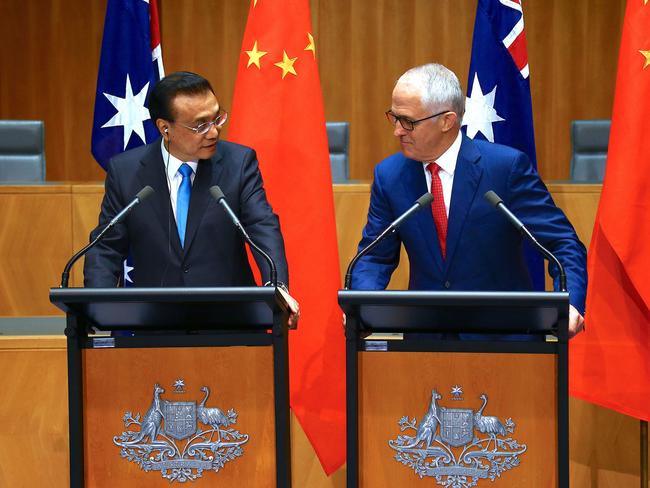South China Sea controversy heats up as man-made islands are almost complete
NEW analysis of satellite photos in the South China Sea shows the ‘clear and present danger’ of China’s mysterious island-building project.

THE controversy in the South China Sea is heating up, with a new report from the US warning China has almost completed construction of three mysterious man-made islands.
The strategic bases will give China the ability to deploy combat aircraft and other military assets with terrifying efficiency across the disputed region.
The Washington-based Center for Strategic and International Studies (CSIS) analysed recent satellite photos and concluded that runways, aircraft hangers, radar sites and hardened surface-to-air missile shelters have either been finished or are nearing completion.
The report, released this week, appears to be the most conclusive indication yet that China is using its island-building project to give teeth to its claim over almost the entire South China Sea and its islands and reefs.
“It confirms what we’ve known for a long time,” Ashley Townshend, a research fellow at the United States Studies Centre at the University of Sydney, told news.com.au.
“Beijing intends to turn these artificial outposts into military footholds that will provide it with power projection capability right across the South China Sea.”


“In a crisis, these facilities would significantly complicate US war plans and access to the South China Sea at acceptable levels of cost and risk.
“There’s also a more important day-to-day implication: these new military outposts allow China to dramatically extend its strategic reach from its southern shores down to Indonesian waters, creating a new strategic status quo and a Chinese sphere of influence.
“Beijing, in other words, is seeking to become the dominant military power in this part of the world with a capacity to prevent, deny or veto other countries from accessing these waters.”
The islands in the study — Subi, Mischief and Fiery Cross reefs — are part of the Spratly chain, which is claimed in whole or in part by China, the Philippines, Vietnam, Malaysia, Taiwan and Brunei.
On each of the islands, China has constructed enough concrete hangers for 24 fighter jets and four or five larger planes such as bombers or early warning aircraft.
China already uses an existing airfield on Woody Island in the similarly disputed Paracel chain, located to the north, where it has maintained mobile HQ-9 surface-to-air missiles for more than a year and deployed anti-ship cruise missiles on at least one occasion.
The combination of the existing base in the north with the new islands in the south means China’s military can now operate over the entire sea at the drop of a hat.

The man-made islands in the South China Sea has drawn strong criticism from the US and others, who accuse Beijing of further militarising the region.
China says its island construction is mainly for civilian purposes, particularly to increase safety for ships that carry an estimated $5 trillion worth of goods through the waterway each year.
It has also provided reassurances that it will not interfere with freedom of navigation or flight, although questions remain as to whether that includes military ships and aircraft.
“The Chinese argument that they have most to gain from unfettered ‘freedom of navigation’ in the South China Sea, and would therefore not block commercial shipping, is a solid argument,” Mr Townshend told news.com.au.
“But the reality of the situation in the South China Sea is that China will have the capacity, and has demonstrated the will, to use its presence on these artificial islands to intimidate and coerce other militaries, coastguards and fishing fleets.”


China has refused to confirm speculation over whether it plans to declare an air defence identification zone over the South China Sea as it has done already over international airspace in the East China Sea.
The US has refused to recognise the East China Sea zone, which requires aircraft to declare their flight plans, identify themselves to Chinese traffic monitors and follow their instructions.
— with Associated Press



